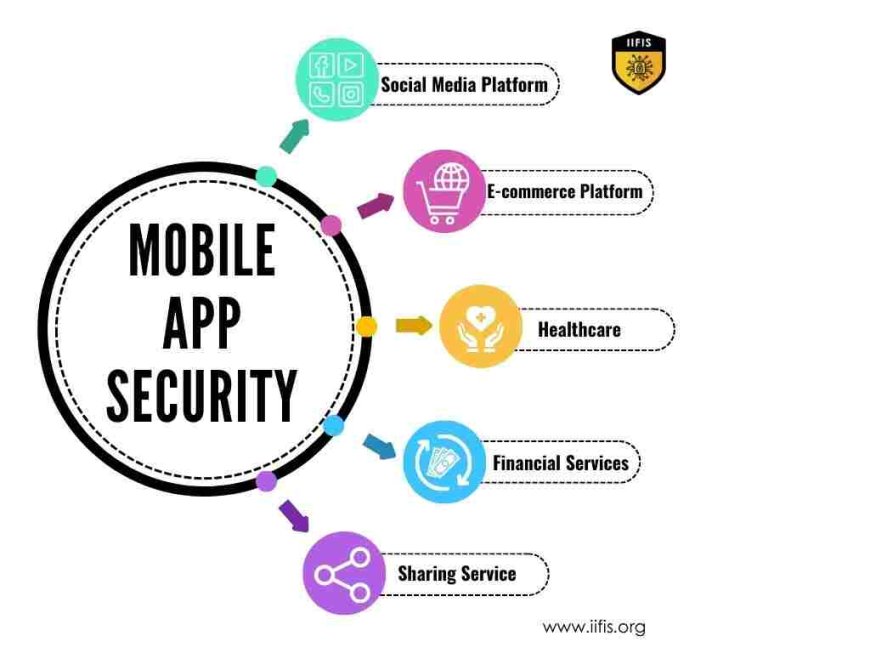Growing Issues Mobile Application Security Breaches
Stay informed about the latest mobile application security breaches and learn how to protect your data from cyber threats.

Demands about safety weaknesses in mobile application security have become clearer in recent times. These queries are a result of people depending increasingly on mobile applications for everything from financial transactions to communication in daily life. Mobile Application Security is now important to millions of people all around due to the growing popularity of smartphones and the comfort they provide. But because of their frequent use, they have also become attractive targets for hackers looking to take advantage of security flaws and damage users' privacy.
The increasing amount of safety problems using mobile applications that are being reported is one of the main causes of increasing issues. The serious effects of these breaches may include identity theft, money loss, illegal access to personal data, and even harm to an organisation's or individual's reputation. These kinds of occurrences highlight how quickly strong security measures are needed to protect from possible dangers.
Examples of Recent Mobile App Security Breaches
Recent years have seen a rise in mobile app security breaches, showing the possibility of personal data being exchanged and stored using these apps. The following are some important examples of current security breaches.

-
Social Media Platform: Improper access to millions of user accounts was made possible by a security issue on a popular social media platform. Through the usage of an issue in the app's identification system, hackers were able to obtain private messages and contact information stored by users.
-
E-commerce Platform: Thousands of consumers' payment information was hacked by a hack on a popular e-commerce platform. Due to an issue in the app's payment processing system, malicious users managed and took credit card information as transactions were being completed.
-
Healthcare App: Following an information breach, customers' private medical records were made available to strangers. The healthcare app was created to store and handle private medical information. Improper safety checks resulted in the breach, which gave hackers access to and the ability to steal confidential medical data.
-
Financial Services App: Improper access to users' financial accounts was made possible using a security issue in a banking app. By taking advantage of an issue in the app's login process, hackers were able to move money and carry out illegal operations without the users' knowledge or permission.
-
Sharing Service: Hackers used a security problem in a popular sharing service to access user accounts and impact sharing requests. Users' privacy and safety during rides were at risk, and their personal information was exposed.
The examples mentioned above show the absolute importance of implementing strong safety systems in mobile applications to safely protect user information from possible hacks and unapproved access. To reduce risks and protect users' privacy and personal data, mobile app developers and providers must give security top priority throughout the app development lifecycle.
What are the key principles of mobile application security?
The key principles of mobile application security revolve around Managing the confidentiality, integrity, and availability of user data while mitigating potential security risks. Here are the fundamental principles.
1: Data encryption: Protecting user privacy and avoiding unwanted access are two benefits of storing private information stored on a device and transferred over networks. Encrypting data both in transport and at rest demands powerful methods.
2: Secure Authentication: promoting that only those with permission may access the app and its functions requires the implementation of reliable verification techniques like fingerprints, PINs, or two-factor authentication. This shields user accounts from compromise and aids in limiting unwanted access.
3: Secure Data Storage: Security of sensitive information from intrusions by malicious programs or attackers can be achieved by storing data securely on the device using secure storage mechanisms, such as the iOS Keychain or Android Keystore.
4: Secure Network Communication: Data is password-protected and covered from man-in-the-middle attacks and hacking when sent over networks using secure communication technologies like HTTPS, TLS, or SSL.
5: Secure Code Practices: Input verification, output encoding, and suitable error handling are examples of secure coding practices and standards that assist reduce common holes like buffer overflows, injection attacks, and cross-site scripting (XSS).
6: Regular Security Updates: Applying the most recent safety updates and changes to the mobile app and its components helps address identified weaknesses and defend against new attacks. Updating the program regularly means that security flaws are quickly fixed and reduced.
7: Least advantages concept: Using this concept provides that every customer or app a part has the minimal amount of access rights and permissions required to carry out their intended tasks. As a result, there is a smaller attack surface and a lower potential impact from security breaches.
8: Secure Configuration Management: By configuring the application and its environment securely, including settings, access restrictions, and permissions, mistakes and security flaws that attackers could take advantage of are avoided.
9: Secure Logging and Monitoring: Applying in-place logging and tracking systems to keep tabs on and audit security-related events, like failed login attempts, illegal entry, and data breaches, improves the prompt detection and resolution of security problems.
10: User Education and Awareness: Users can be more knowledgeable about protecting their personal data and improving overall security by learning about security best practices, such as avoiding unsafe Wi-Fi networks, being wary of phishing work, and keeping their devices and apps up to date.
Problems about mobile app security breaches have grown as a result of our growing reliance on mobile applications for a variety of daily tasks. The major effects of these hacks may include identity theft, money losses, and privacy violations. Strong security measures are desperately needed to prevent unwanted access to and exploitation of user data, as demonstrated by recent events.
The examples given above fundamental ideas of mobile application security stress how crucial it is to protect user data using secure coding, encryption, secure authentication, and data methods for storage. To further improve mobile app security and reduce potential risks, regular updates to security, least privilege access, secure configuration management, and user education are all important.






















